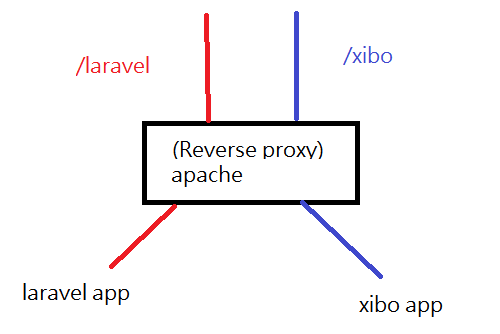Recently, I am following advices from this post to build up my application with xibo. Below picture summarizes the idea.

Basically, one route /laravel/ to my application while /xibo/ to the xibo application.
For the xibo route, I am relying on the built-in feature CMS_ALIAS to do the job. But, I have following questions regarding on this feature. In other words, xibo rely on this variable to provide the ALIAS function. Then, I have following questions
Q1: Why CMS_ALIAS is not enforced in development mode?
According to the entrypoint.sh, the critical ALIAS configuration is only applied in non development mode.
Although comments address the reasons for excluding them, any suggestions for me if I really want to have the alias on development, and avoid the problem addressed in the comment?
Q2: Is it possible to change the root url only?
Actually, I do want to route with following, from /xibo/ to / such that xibo is kind of starts at the root to avoid the issue. But, according to my another bug report, the root URI relies on CMS_ALIAS. Are there any way for me to configure the ROOT URL to something without modifying the apache configuration inside the docker container?
DOMAIN/xibo --- (apache) --> XIBO_CONTAINER/
Q3: What are the Rewrite rules in xibo-cms\web\.htaccess served for?
In recent implementation from Factory/ContainerFactory.php, it should figure out the basePath from SCRIPT_NAME & REQUEST_URI. Why do we still need the rewrite rule in .htaccess?
UPDATED:
- 20210907: Add Q3